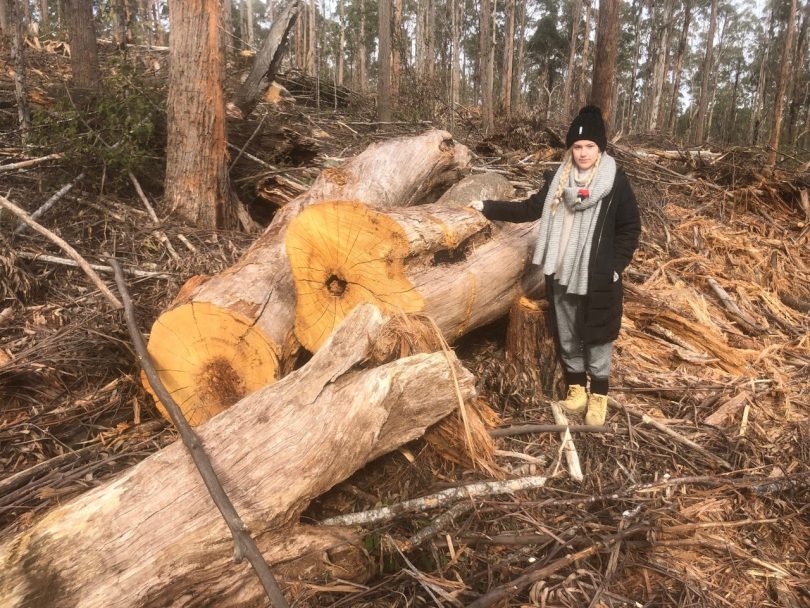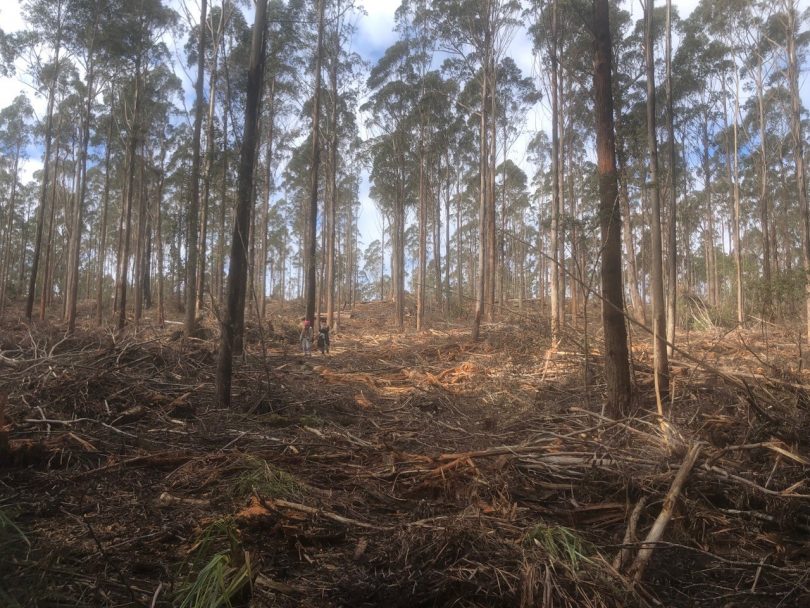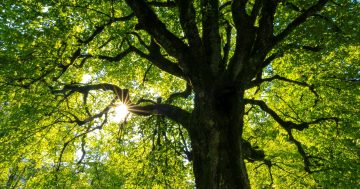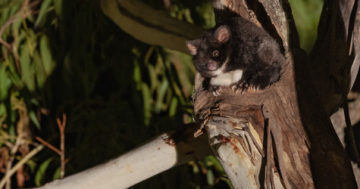
“I have seen so many large healthy trees that have been cut down to be chipped, ” – Peter Day in Tantawangalo State Forest. Photo: Supplied.
Community comment and concern about forestry is always robust, which was again the case last week around Region Media’s reporting of the current logging operation underway in Tantawangalo State Forest, southwest of Bega.
Comments ranged from:
Dave Stewart – “Great renewable resource if done correctly and great for community by providing jobs.”
Vivian Harris – “We shouldn’t be logging native forests, particularly not for wood chips. Why are single use paper products like toilet paper, tissues, etc even allowed to be made from wood chips instead of recycled paper? We need to be planting forests as carbon sinks not logging them.”
One point required further investigation.
Peter Day, a concerned resident and one of those behind the Tantawangalo Forest protest page on Facebook claimed that the Environmental Protection Authority (EPA) is currently investigating logging non-compliances in Tantawangalo State Forest.
All the timber coming out of the forest is being chipped in Eden as part of ongoing management by the Forestry Corporation of NSW.
A Forestry spokesperson says the “thinning operation” is designed to promote sawlog growth for the future.
“Thinning means removing the smallest and weakest trees to provide the more dominant and vigorous trees space and light to grow, which can be important when managing light-hungry species like eucalypts.
“There is some low-quality timber produced that is suitable for pulp production, it is simply a by-product of the operation.”

“Forestry Corps claim that they are cutting down the smallest and weakest trees is just not true,” – Peter Day, featuring Bridget Day in Tantawangalo State Forest. Photo: Supplied.
In response to questions from Region Media, the EPA confirmed it is taking an interest in the current operations.
“The EPA is monitoring current operations in the area,” a spokesperson says.
“With regard to the current forestry operation within Tantawangalo State Forest, the EPA received a community report alleging a variety of non-compliances and is currently investigating these matters.”
The EPA regulates native forestry operations on both public and private land in New South Wales and “maintains an active compliance and enforcement program of native forestry operations.”
The EPA assesses the compliance of these operations with rules set by the NSW Government that according to the spokesperson, “aim to ensure native forests in NSW continue to provide valuable habitat for threatened plants and animals and a sustainable timber supply for NSW.”
It’s a role that is often brought into question given the government’s interest in both agencies – the Forestry Corporation of NSW and the Environmental Protection Authority.
What rings loudly in many people’s mind are infringements that date back two years in the same forest.
“In 2018 the EPA concluded an investigation into a variety of alleged non-compliances by Forestry Corporation during earlier operations in Tantawangalo State Forests during 2015-2017,” the EPA spokesperson says.
“Formal warning letters were issued for alleged inadequacies in the protective measures required for rocky outcrops, hollow-bearing trees and streamside buffers.
“A range of other allegations could not be substantiated or were found to be compliant with the Integrated Forestry Operations Approval, with no further action taken.”
Moving forward the EPA says “The Forestry Corporation of NSW is aware of the legal and regulatory frameworks and the EPA expects them to work within these frameworks, or regulatory action could be taken.”

Tantawangalo State Forest June/July 2019. Photo: Peter Day.
The non-compliance issues raised with the EPA from the 2015-2017 Tantawangalo forestry operations came as a result of complaints made by environmental activists, which seems to chip away at the confidence those concerned about the current activity have in the EPA.
“Forestry logging operations are self-regulated, so the EPA do not audit forest markups prior to a logging operation,” Peter Day says.
“The EPA conducts risk based forest audits throughout the State only after a compartment has been logged, which is too late to protect critical forest features and communities that are protected under State law.
“Compartment 2400 of the Tantawangalo State Forest contains large and important old growth forest communities that need protecting, yet the Forestry harvesting plan shows numerous areas of forest that have been declared ‘Habitat Unknown’.
“Many of these ‘Habitat Unknown’ areas are to be logged. This is one of the issues I have asked the EPA to look into and I am hoping to get more information on this.”
Mr Day says he understands that his complaints are being taken seriously
“The EPA has confirmed that they will be going into compartment 2407 this week to investigate possible non-compliances by Forestry,” he says.
“The EPA have told me on many occasions that they consider the Tantawangalo forest to contain critical habitat that needs protecting and that they try to prioritise auditing this forest.
“However, they do not have adequate resources available to undertake these audits as often as they would like.”














